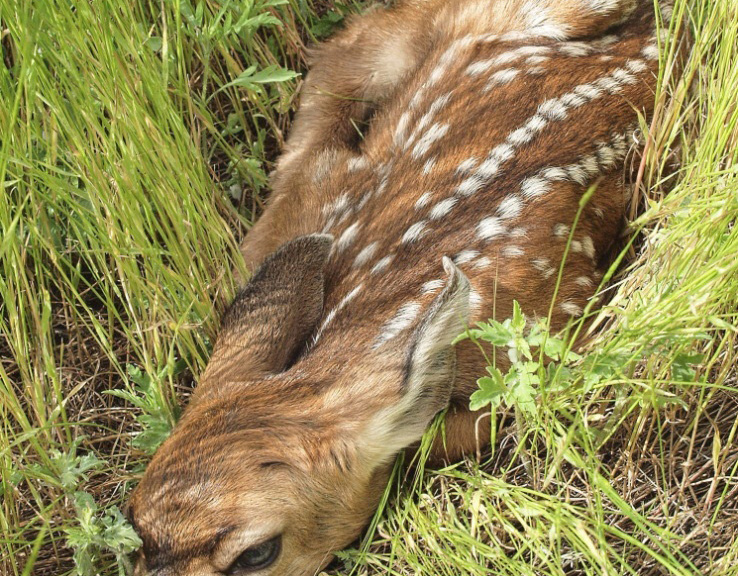How Do I Know if I Have Nutria on my Property?

by Carrie Wilson
6-8-2018
Website
Question: I own property in Merced and I have some concerns about the Central Valley nutria discovery. I haven’t noticed anything out of the ordinary, but what signs should I be looking out for? Can I have someone come out and survey my property to make sure they’re not here, just for my own peace of mind? (Ann)
Answer: Nutria are large, invasive and destructive rodents from South America. Due to their extensive herbivory and burrowing habits, they can have devastating impacts on wetland habitats, agriculture and water conveyance infrastructure. To date, nutria have been found in six Central Valley counties (Merced, Stanislaus, Fresno, Mariposa, Tuolumne and San Joaquin).
If nutria take up residence in habitat on your property, you will probably start to notice the damage pretty quickly. Nutria consume up to 25 percent of their body weight in plant material each day. They are very wasteful feeders that prefer the submerged portions or tender tips of plants such as bulrush and cattails. Look for large areas of cleared (eaten) vegetation, stem cuttings left floating or grazed tops of new growth at the water surface. Their feeding causes extensive damage to the plant community, soil structure and nearby agricultural crops.
Nutria also burrow into banks and levees, creating complex dens that span as far as 6 meters deep and 50 meters into the bank. This can cause severe streambank erosion, increased sedimentation, levee failures and roadbed collapses. Nutria burrows – which can be misidentified as muskrat burrows – look like large holes in dirt banks. See examples at www.wildlife.ca.gov/nutria. Vegetation damage is much easier to spot.
CDFW has deployed nutria survey and trapping teams in the Delta and throughout the San Joaquin Valley, but we need landowners’ help! If you have received a letter from CDFW requesting written permission to enter or cross your property for the purpose of nutria work, please sign and return that form as soon as possible. If you have not received a form but believe nutria are on your property, please contact us at (866) 440-9530 or invasives@wildlife.ca.gov. Currently, we have limited staff available to respond and are prioritizing our efforts, but the public continuing to assist with identifying new locations of nutria is critical to the success of this effort.
How do you identify a nutria?
Question: I saw a rodent swimming in the water that I have never seen before. It looked bigger than a muskrat. What should I do? (Paul)
Answer: Without additional information, it’s hard to determine whether or not you spotted a nutria – but you may have! California has multiple semi-aquatic mammals that live in habitats currently known to be occupied by nutria. The most common animals mistaken for nutria are muskrats, beavers and sometimes otters, all of which are native or naturalized in California.
To determine if an animal is a nutria, look for the following characteristics: whiskers, tail, size and fur color beneath the ears. Nutria are set apart from muskrats, beavers and otters by their obvious white whiskers, a hairless, round, rat-like tail and black webbed hind feet. Though white muzzles are not uncommon in these species, the long, white whiskers are a very distinguishing characteristic of nutria. Though muskrat and nutria tails can be difficult to tell apart without a good view, full-grown muskrats only grow to about the size of a football, while adult nutria grow to about the size of a beagle. A nutria identification guide can be found on the CDFW website.
If you spot a possible nutria, please try to take a photo or video, so that we can identify the animal. We also need you to be as specific as possible about where the animal was spotted, and let us know as soon as possible.
A number of nutria sightings that were reported to CDFW by the public have been confirmed by using the information listed above. If you see a nutria, please call the Invasive Species Program Hotline at (866) 440-9530 or email invasives@wildlife.ca.gov. Thank you!
Carrie Wilson is a marine environmental scientist with the California Department of Fish and Wildlife. While she cannot personally answer everyone’s questions, she will select a few to answer each week in this column. Please contact her at CalOutdoors@wildlife.ca.gov.
More Reports

6-4-2018
Spring and early summer is the peak time for much of California’s wildlife to bear their young. With this in...... Read More

6-2-2018
The fifth annual California Invasive Species Action Week is scheduled Saturday, June 2, through Sunday, June 10. Action Week is a...... Read More
